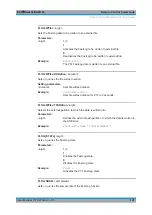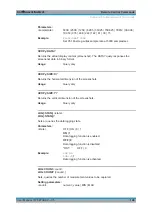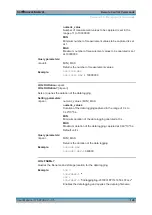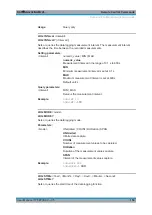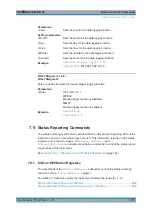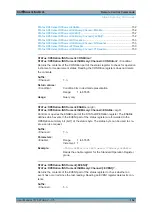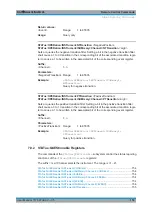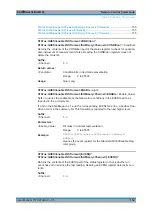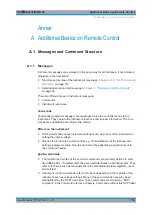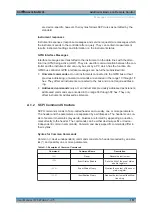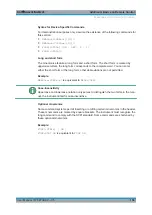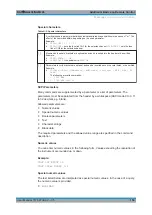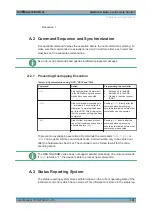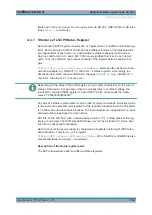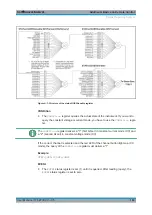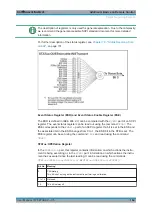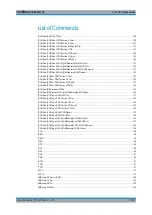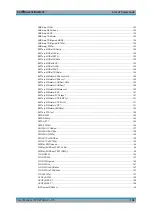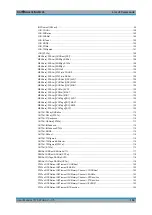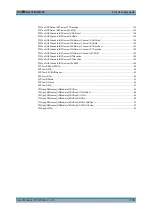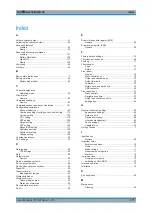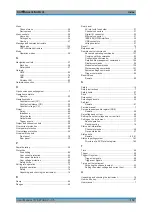
Additional Basics on Remote Control
R&S
®
NGL200/NGM200
161
User Manual 1178.8736.02 ─ 05
Response: 1
A.2
Command Sequence and Synchronization
A sequential command finishes the execution before the next command is starting. To
make sure that commands are actually carried out in a certain order, each command
must be sent in a separate command line.
As a rule, send commands and queries in different program messages.
A.2.1
Preventing Overlapping Execution
Table A-4: Synchronization using *OPC, *OPC? and *WAI
Command
Action
Programming the controller
*OPC
Sets the Operation Complete bit
in the ESR after all previous com-
mands have been executed.
●
Setting bit 0 in the ESE
●
Setting bit 5 in the SRE
●
Waiting for service request
(SRQ)
*OPC?
Stops command processing until
1 is returned. It occurs after the
Operation Complete bit has been
set in the ESR. This bit indicates
that the previous setting has been
completed.
Sending
*OPC?
directly after the
command whose processing
should be terminated before other
commands can be executed.
*WAI
Stops further command process-
ing until all commands have been
executed before
*WAI
.
Sending
*WAI
directly after the
command whose processing
should be terminated before other
commands are executed
To prevent an overlapping execution of commands the commands
*OPC
,
*OPC?
or
*WAI
can be used. All three commands cause a certain action only to be carried out
after the hardware has been set. The controller can be forced to wait for the corre-
sponding action.
The R&S
NGL/NGM series does not support parallel processing of remote commands.
If
OPC?
returns a "1", the device is able to process new commands.
A.3
Status Reporting System
The status reporting system stores all information on the current operating state of the
instrument and errors which have occurred. This information is stored in the status reg-
Status Reporting System

